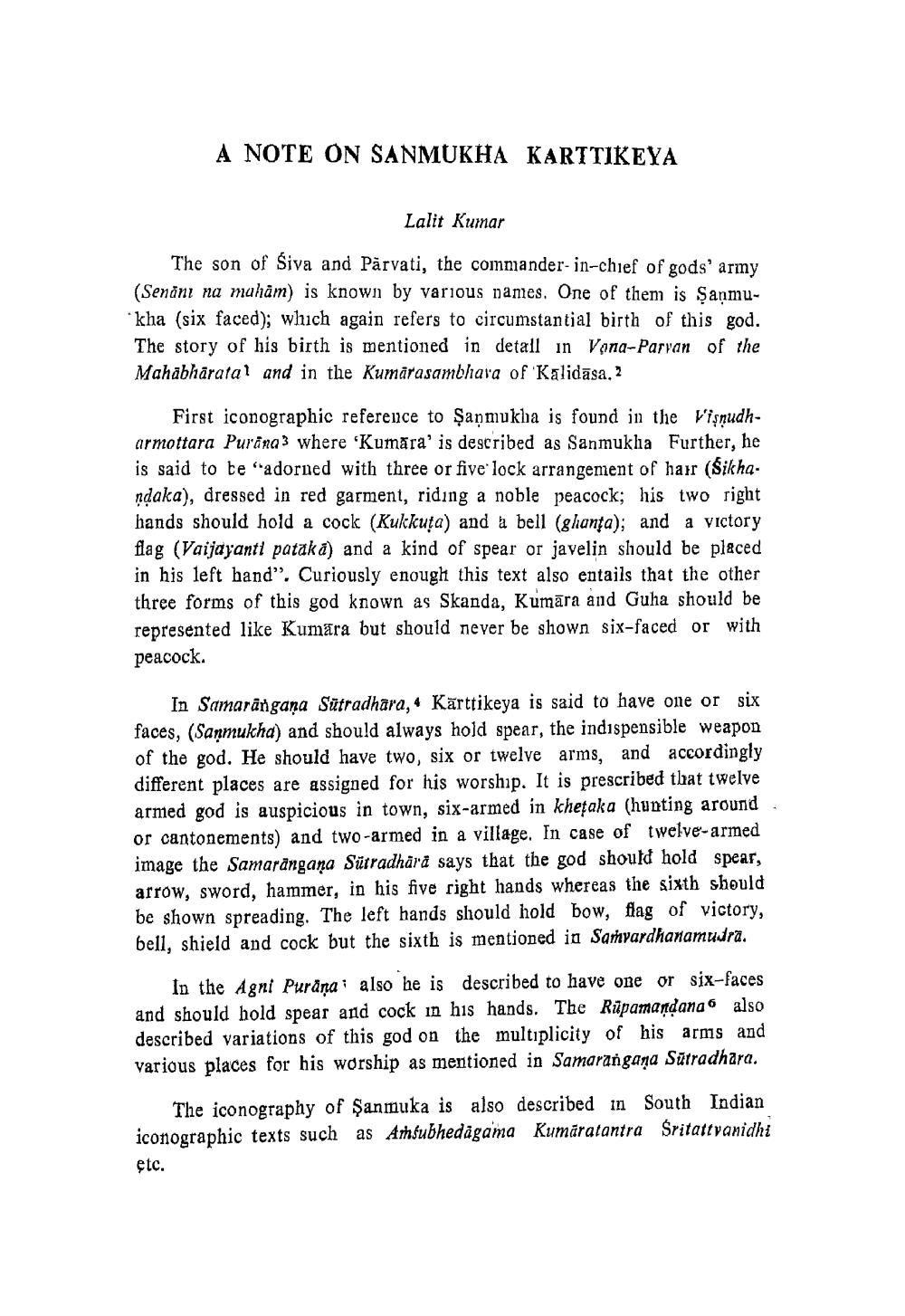________________
A NOTE ON SANMUKHA KARTTIKEYA
Lalit Kumar
The son of Siva and Parvati, the commander-in-chief of gods' army (Senäni na maham) is known by various names. One of them is Şanmu"kha (six faced); which again refers to circumstantial birth of this god.
The story of his birth is mentioned in detall in Vona-Parvan of the Mahābhāratal and in the Kumarasambhara of Kalidāsa. 2
First iconographic reference to Şanmukba is found in the Vişnudharmottara Purana 3 where Kumāra' is described as Sanmuklia Further, he is said to be adorned with three or five lock arrangement of hair (Sikha. ndaka), dressed in red garment, riding a noble peacock; his two right hands should hold a cock (Kukkuța) and a bell (ghanţa); and a victory flag (Vaijayanti pataka) and a kind of spear or javelin should be placed in his left hand”. Curiously enough this text also entails that the other three forms of this god known as Skanda, Kumāra and Guha should be represented like Kumara but should never be shown six-faced or with peacock.
In Samarāngana Sūtradhara, - Kārttikeya is said to have one or six faces, (Sanmukha) and should always hold spear, the indispensible weapon of the god. He should have two, six or twelve arms, and accordingly different places are assigned for his worship. It is prescribed that twelve armed god is auspicious in town, six-armed in khetaka (hunting around or cantonements) and two-armed in a village. In case of twelve-armed image the Samarängana Sütradhāra says that the god should hold spear, arrow, sword, hammer, in his five right hands whereas the sixth should be shown spreading. The left hands should hold bow, flag of victory, bell, shield and cock but the sixth is mentioned in Samvardhanamudra.
In the Agni Purana also he is described to have one or six-faces and should hold spear and cock in his hands. The Rūpamandana 6 also described variations of this god on the multiplicity of his arms and various places for his worship as mentioned in Samarangana Sūtradhara.
The iconography of Şanmuka is also described in South Indian iconographic texts such as Arśubhedāgama Kumaratantra Sritattyanidhi etc.




